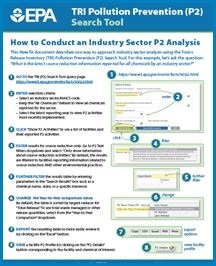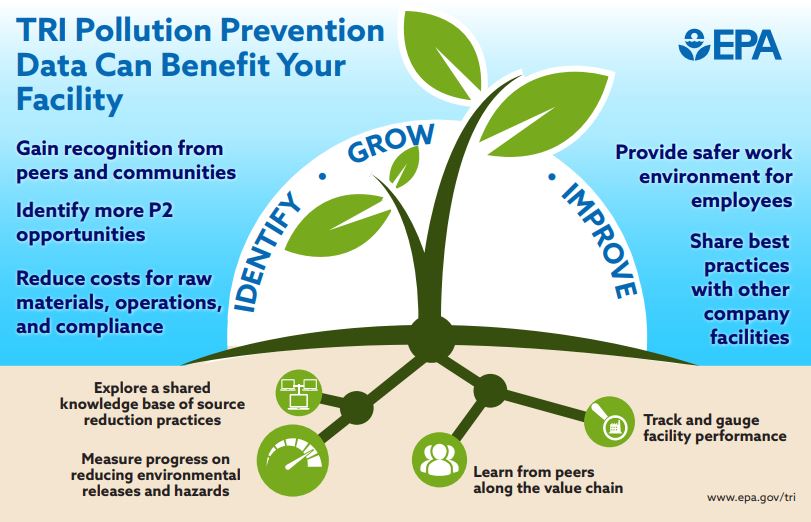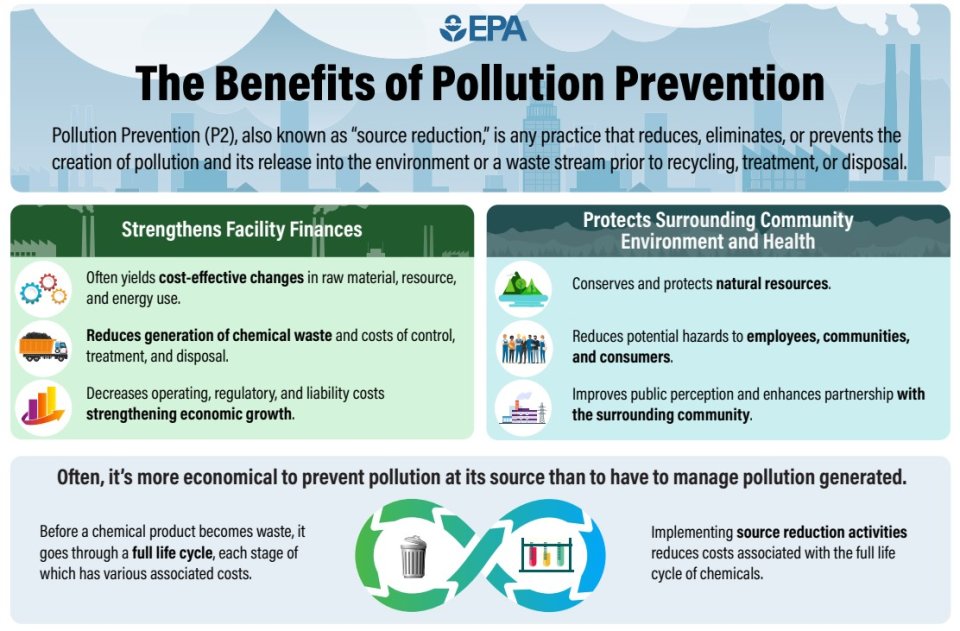TRI Pollution Prevention (P2) Resources
EPA has resources to help industrial facilities report pollution prevention (P2) information to the Toxics Release Inventory (TRI) Program, access and analyze P2 data, and share P2 best practices.
Reporting P2 to TRI
- TRI Source Reduction Webpage: Key information includes an interactive plant diagram for learning about source reduction categories and how they may apply to your facility.
- TRI Green Chemistry & Engineering webpage: Learn more about green chemistry and engineering practices and the codes used to report these activities.
- TRI Source Reduction Reporting Fact Sheet (pdf) : Answers to common questions about the reporting of required and optional P2 information on annual TRI forms.
- TRI P2 Reporting Tips (pdf) : Overview for facilities of the benefits of reporting P2 activities to the TRI Program and guidance on how to describe P2 activities in Section 8.11 of the TRI Form R.
- TRI P2 Reporting Tutorials:
- How to calculate a production or activity ratio (section 8.9),
- How to report source reduction activities (section 8.10), and
- How to provide additional details on P2 achievements or other TRI aspects (section 8.11 and 9.1).
How-To Guidance
- How to Access P2 Data Reported to TRI Using the P2 Search Tool: 14-minute video describing query options, the facility P2 profile report, and the parent company comparison report.

- How to Conduct an Industry Sector P2 Analysis (pdf) : Step-by-step guide to using the TRI P2 Search Tool for industry analysis.
- : Step-by-step guide to using the TRI P2 Search Tool to identify facilities that have reported source reduction activities.
- Using TRI P2 Data to Help Green Supply Chains (pdf) : General information on the value of greening supply chains and how to query for supplier-related text entries.
- TRI, P2, and Automotive Suppliers (pdf) : Supplier information specific to the automotive industry sector.
Videos
Video about a Minneapolis-based bakeware manufacturer that uses TRI data to identify ways to reduce the use of certain toxic chemicals in its processes and finished products. October 2016.
Video for TRI reporting facilities on the benefits of reporting pollution prevention information to TRI, with perspectives from industry and EPA. February 2015.
Other Resources
- Browse the TRI P2 Analyses and Publications for information on P2 opportunities and the benefits of P2 implementation.
- Learn about other EPA resources including EPA’s P2 Program and EPA's Sustainability Program.




